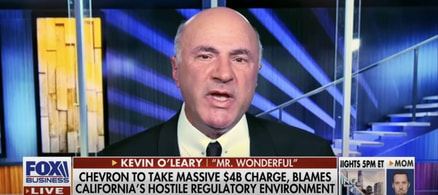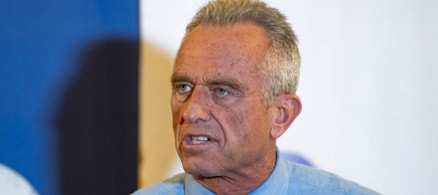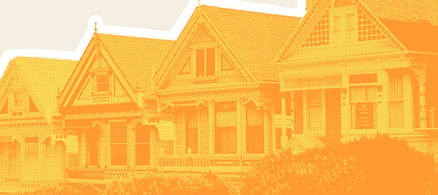Some countries are already there, within the financial version of the Upside Down from Stranger Things.
Experts are speculating that the U.S. may eventually join them, as the Federal Reserve pushes rates lower and lower. For the first time since the 2008 financial crisis, the Fed has cut rates twice in a row.
What are negative interest rates?

Negative interest rates are often used to counter deflation.
Negative interest rates are typically seen during weak economies and periods of deflation — when prices go into a downward spiral.
Businesses and consumers tend to wait to see if prices will go even lower, so they save money instead of spending it. To encourage spending, banks start making it costly to sit on your money.
Instead of earning 2% interest on your savings, you might have to pay a 0.6% annual fee to keep it at the bank. That's considered an interest rate of -0.6%, and it's money that you're losing.
Negative interest works the opposite way for borrowers. To get people and businesses spending, banks extend loans at negative rates — meaning a borrower's interest "charge" is subtracted from the principal, not added to it.
For example, you might be offered a 15-year mortgage with a negative annual interest rate of -0.5%. By the time you finish repaying the loan, you'll have paid less money than the amount you originally borrowed.
Meet Your Retirement Goals Effortlessly
The road to retirement may seem long, but with WiserAdvisor, you can find a trusted partner to guide you every step of the way
WiserAdvisor matches you with vetted financial advisors that offer personalized advice to help you to make the right choices, invest wisely, and secure the retirement you've always dreamed of. Start planning early, and get your retirement mapped out today.
Get StartedWhy are we hearing a lot of talk about negative interest rates?

Below-zero interest has been spreading around the world.
Negative interest rates have been in the news lately because they've been spreading in Europe and Asia.
Commercial banks in Switzerland and Denmark recently announced negative interest rates for wealthy depositors, and the European Central Bank — which has had negative rates for five years — is expected to send its rates even lower.
European Central Bank officials say the below-zero interest is providing important support for Europe's economy, contrary to complaints from banks in Germany and France that the negative rates are causing harm.
Negative interest rates have become a topic in the U.S. because of the recent flip-flop for Treasury bonds. Short-term Treasurys have been paying higher interest than long-term bonds, in what's known as an inverted yield curve.
While that's often seen as an economic warning sign, it's not the same as a negative interest rate. The government is still paying interest on its bonds — and isn't charging people to hold them.
The history of negative interest rates

Sweden's central bank, the Riksbank, was the first to use negative interest rates.
During the global recession from 2007 to 2009, central banks in Europe lowered interest rates to zero or close to it to get people to start borrowing. However, their economies continued to be sluggish.
This led the central banks to introduce a collection of unconventional policies — including negative interest rates.
It happened first in Sweden, where the central bank in 2009 lowered the rate on some deposits it holds overnight for commercial banks to -0.25%.
Denmark's central bank introduced negative rates in 2012 and has stuck with them ever since, except for one four-month period in 2014. The European Central Bank cut interest rates below zero in 2014, and the Bank of Japan joined the party in 2016.
The moves by the central banks haven't directly impacted consumers. But commercial banks often pass the negative interest along to their customers, by charging them fees to hold their deposits.
Stop overpaying for home insurance
Home insurance is an essential expense – one that can often be pricey. You can lower your monthly recurring expenses by finding a more economical alternative for home insurance.
SmartFinancial can help you do just that. SmartFinancial’s online marketplace of vetted home insurance providers allows you to quickly shop around for rates from the country’s top insurance companies, and ensure you’re paying the lowest price possible for your home insurance.
Explore better ratesWill we see negative interest rates in the US?

While negative interest rates could present some opportunities for borrowers in the U.S. — after all, who wouldn't want to pay back less than they borrowed? — their introduction could be taken as a sign of an economy in serious trouble.
Many experts are predicting that the Federal Reserve might be forced to go negative, because the Fed's benchmark interest rate is already very low and doesn't offer the central bank much room to cut rates if things turn bad.
Plus, President Donald Trump has tweeted that he wants rates "down to ZERO, or less." The Fed's "federal funds rate" has been cut to between 1.75% and 2%.
If the Fed were to introduce negative interest rates, commercial banks would be charged interest on their deposits. And, as the situation in Europe demonstrates, that negative interest would likely be passed on to consumers.
This means savers would be charged interest by banks to hold their deposits, instead of earning interest.
But the long U.S. economic expansion is still intact, and — other than the inverted yield curve — the economy is showing few of the usual signs that it's about to fall into recession.
So, don't start looking for negative-interest-rate mortgages anytime soon.
Sponsored
Follow These Steps if you Want to Retire Early
Secure your financial future with a tailored plan to maximize investments, navigate taxes, and retire comfortably.
Zoe Financial is an online platform that can match you with a network of vetted fiduciary advisors who are evaluated based on their credentials, education, experience, and pricing. The best part? - there is no fee to find an advisor.







